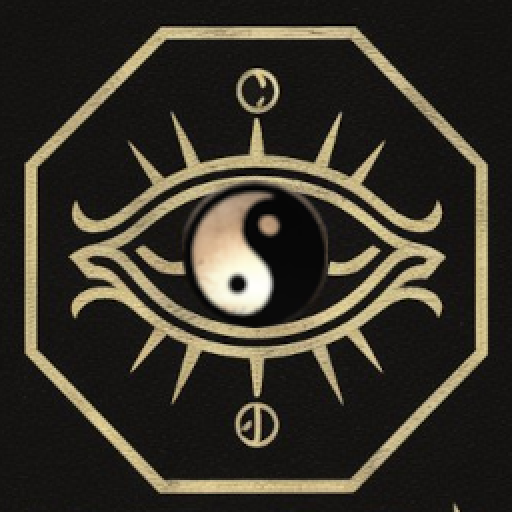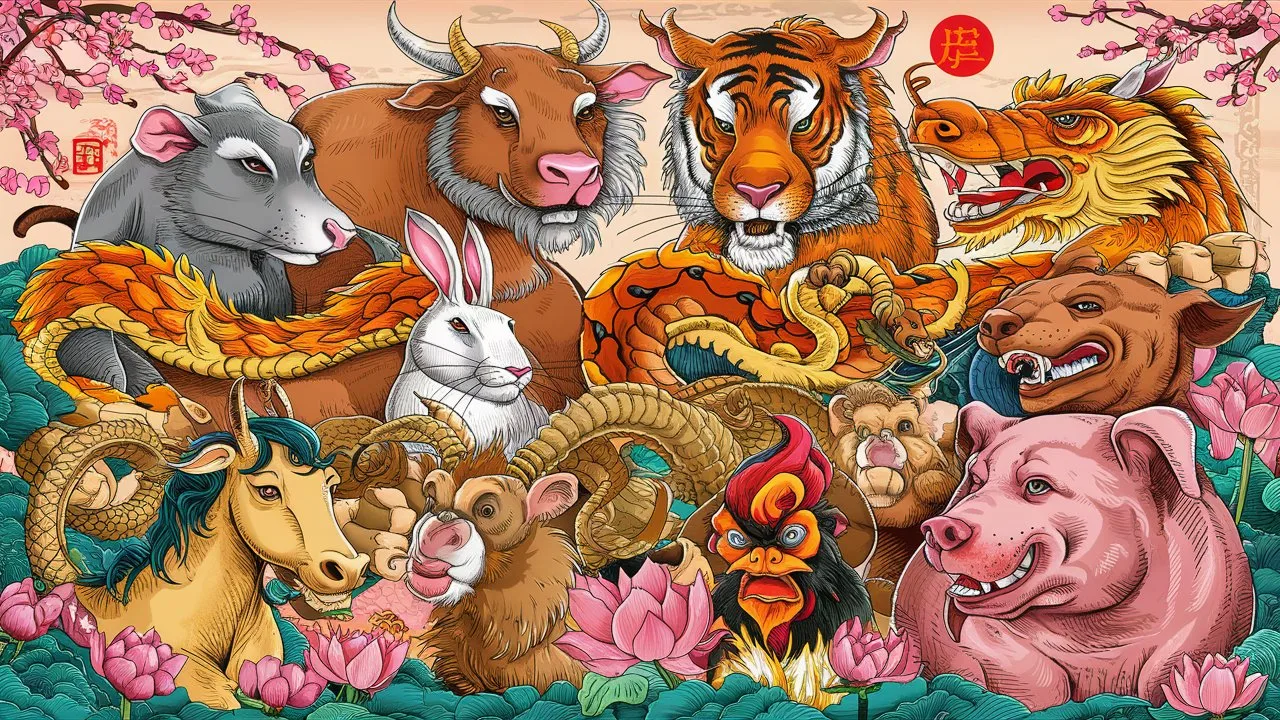In the rich mosaic of global cultures, the Chinese zodiac stands out as a captivating concept. It assigns a symbolic animal to each year in a recurring 12-year cycle. This system is not just a part of Chinese folklore and history; it’s a distinctive perspective on the intricate patterns of Chinese culture and its celestial connections.
The Chinese zodiac is more than just a cultural curiosity—it’s a profound reflection of the Chinese people’s relationship with the cosmos. Each year is marked by an animal, each with its own characteristics and influences, weaving a narrative that’s both personal and collective.
Let’s explore this fascinating system together, uncovering the stories behind each animal and the cycle they form. It’s a journey through time, tradition, and the stars, revealing the depth and beauty of Chinese culture.
The Origin and Significance
The Chinese zodiac is a tapestry of rich tradition and complexity, deeply interwoven into the fabric of Chinese society for thousands of years. Its origins are as mysterious as they are fascinating, with a multitude of theories and legends offering insights into its beginnings.
The zodiac concept is thought to have taken root in the prehistoric era, with early indications pointing to its connection with the ancient practice of marking years using the Earthly Branches. The “Historical Records” by Sima Qian, a renowned historian from the Han dynasty, offers a window into this ancient tradition, detailing the creation of the Jiazi cycle, which is seen as a precursor to the zodiac system. This cycle, in conjunction with the Earthly Branches, lays the groundwork for the Chinese zodiac.
The Chinese zodiac is a melting pot of cultural and religious influences. It’s believed to have been shaped by ancient Chinese practices of animal worship and totemism, as well as early astronomical observations. The zodiac animals are not chosen at random; they carry symbolic significance and are thought to influence both the natural world and human affairs.
The search for the zodiac’s exact origins has sparked scholarly debate. Scholars like Zhao Yi from the Qing dynasty suggest it may have originated from the nomadic tribes of northern China, who used animals to mark time. In contrast, modern scholars such as Guo Moruo propose an external origin, theorizing that the zodiac was introduced to China from the Middle East, potentially influenced by the Babylonian zodiac.
Historical evidence, including the “Book of Songs” and bamboo slips from the Yunmeng tombs in Hubei province, indicates that the association of Earthly Branches with animals was already in place during the Spring and Autumn period, predating the Han dynasty. These findings challenge the external origin theory and support the idea that the zodiac is a product of indigenous Chinese culture.
Each zodiac animal is endowed with specific attributes and characteristics that are thought to shape the personality and destiny of those born in its year. For instance, individuals born in the Year of the Dragon are often seen as strong and ambitious, while those born in the Year of the Ox are viewed as patient and reliable.
The Chinese zodiac follows the lunar calendar, with each year linked to a particular animal sign. It’s not just a form of entertainment but a significant aspect of Chinese astrology, where these signs are believed to have a profound impact on an individual’s life, including relationships, career, and health.
Today, the Chinese zodiac maintains a prominent role in Chinese culture. It guides everything from choosing auspicious dates for weddings and business openings to influencing personal decisions and even the naming of newborns. Its reach extends beyond China, with people worldwide taking an interest in their zodiac signs for insights into their personalities and future prospects.
Rooted in ancient Chinese mythology, astronomy, and cultural practices, the Chinese zodiac is a testament to the enduring power of tradition and the human quest to find meaning in the cosmos. It’s a system that not only reflects the past but also continues to shape the present and future, offering a unique lens on the interplay between the heavens and human destiny.
The Connection with the Heavenly Stems
The Chinese zodiac is intricately connected to another ancient Chinese system, the Heavenly Stems, creating a rich and complex calendrical framework. The Heavenly Stems consist of ten unique elements—Jia, Yi, Bing, Ding, Wu, Ji, Geng, Xin, Ren, and Gui—each imbued with its own connotations related to the five elemental phases of Chinese philosophy: wood, fire, earth, metal, and water, with distinctions between Yin and Yang aspects.
This fusion of Stems and Branches generates a 60-year cycle, marking not just the years but also the finer grains of time—months, days, and hours. The Stems-Branches system is a nod to the advanced timekeeping of ancient China and its pervasive influence on everyday life.
Each Stem is laden with meanings and is thought to shape the energy and characteristics of the time units it represents. For example, Jia, with its Yang wood association, is seen as fostering creativity and growth, while Gui, linked to the Yin water, is associated with introspection and adaptability.
The union of the Heavenly Stems with the Earthly Branches, which align with the twelve zodiac animals, results in a dynamic interplay of energies. This interaction is pivotal in Chinese metaphysics, used to interpret and forecast patterns in nature, society, and personal lives. The pairing of a Heavenly Stem with an Earthly Branch is believed to offer a distinctive imprint for each year, affecting the overall mood and occurrences of that year.
The Stems and Branches also boast a profound symbolic language in Chinese culture. They feature prominently in traditional practices like Feng Shui, where their interaction is considered when selecting auspicious dates for significant events or when planning the arrangement of living spaces to align with natural energies.
Furthermore, the Stems-Branches system is integral to Chinese medicine, where the five elements linked to the Stems are employed to comprehend the equilibrium and circulation of life energy within the body. Each element is thought to correspond to specific organs and emotional states, with imbalances addressed through various healing practices.
The interconnection between the Chinese zodiac and the Heavenly Stems mirrors the holistic view of the universe in Chinese thought. It highlights the interrelatedness of all things and the conviction that grasping these relationships can offer insights into the world’s natural order. This system isn’t just a remnant of history but a vibrant tradition that continues to shape Chinese cultural practices and perspectives to this day.
Cultural Significance and Modern Interpretation
The Chinese zodiac’s cultural significance indeed stretches far beyond its historical roots and its association with the Heavenly Stems. It’s a pervasive thread in Chinese society, acting as a common language and a treasured cultural heritage that spans generations. The zodiac’s imprint is clearly visible across various domains, from art and literature to folklore, where the personalities and tales of the zodiac animals are celebrated.
In the realm of art, the twelve zodiac animals have been captured in a myriad of forms, from detailed carvings and paintings to sculptures and decorative patterns. Each animal carries symbolic meanings that highlight its inherent qualities, such as the dragon signifying power and fortune, and the rabbit representing gentleness and agility.
Literature has also been significantly shaped by the zodiac, with narratives and characters often linked to the attributes of the zodiac animals. This is reflected in how stories are crafted around the traits of the animals, conveying moral teachings and cultural ideals.
The folklore and traditional beliefs surrounding the zodiac are rich and diverse. Zodiac signs are used to assess compatibility in relationships, with certain signs thought to be more harmonious than others. This practice extends beyond romantic relationships to include friendships and business partnerships.
In contemporary times, the relevance of the Chinese zodiac has not diminished; instead, it has evolved to fit modern life. Astrological forecasts based on zodiac signs are widely read and followed, with individuals seeking guidance from the zodiac in their personal and professional lives. The zodiac’s influence is also evident in the celebration of the Lunar New Year, where each year is linked to a specific animal and its attributes.
Furthermore, the zodiac has embraced the digital era, with apps and online platforms offering personalized horoscopes and advice based on one’s zodiac sign. This modern approach to an ancient tradition has made the zodiac accessible to a global audience, fostering engagement and understanding of this facet of Chinese culture.
The zodiac’s influence on naming practices is another area where its cultural significance is apparent. Parents often select names for their children based on the attributes of the zodiac animal of the year in which they are born, with the belief that it can shape the child’s personality and destiny.
In the business and economic spheres, the zodiac’s impact is also significant. The belief in the power of certain zodiac signs to attract prosperity or good fortune can influence business decisions, investments, and the timing of significant corporate events.
The Chinese zodiac, therefore, transcends its function as a timekeeping system; it is a living cultural narrative that continues to evolve and impact the lives of people worldwide. Its integration into modern life is a testament to the enduring charm and adaptability of this ancient tradition, offering a unique perspective on the interplay of culture, personality, and destiny.
Conclusion
Absolutely, the Chinese zodiac, intricately linked with the Heavenly Stems, is indeed much more than a simple time-keeping mechanism. It’s a cultural narrative that has stood the test of millennia, reflecting our innate quest to discern patterns in the cosmos and to synchronize with the rhythms of nature.
This system is a testament to the profound wisdom of ancient Chinese civilization, offering a framework for understanding the world and our place within it. As we delve into its intricacies, we uncover a wealth of cultural heritage that continues to captivate and inspire individuals around the world.
The Chinese zodiac, with its rich symbolism and deep-rooted traditions, provides a lens through which we can appreciate the interconnectedness of life and the universe. It’s a living legacy that transcends time and space, connecting us with our past while guiding us into the future.
In essence, the Chinese zodiac is a timeless cultural narrative that has not only endured but also flourished, influencing and enriching the lives of people across the globe. It’s a beacon of continuity in a world of change, a reminder of the enduring power of tradition and the human spirit’s quest for meaning and connection.
Refs:
The Celestial Compass: An Introduction to the Chinese Stem-Branch System

